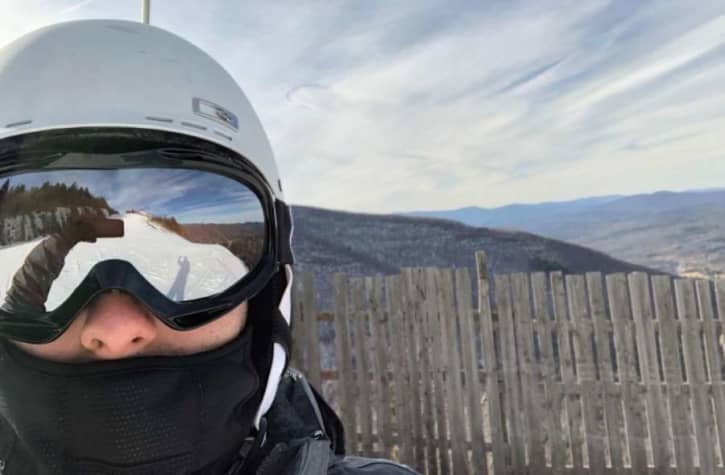If you’re new to skiing, it’s easy to forget about keeping your legs warm. Many people worry so much about their face, neck, toes, and hands that the area between your feet and stomach become an afterthought. Luckily, your legs are probably the easiest parts of your body to keep warm if you layer them up correctly.
Here’s the three-tier layering system I use to keep my legs warm:
- Micro-fleece Moisture Wicking Base Layer
- Fleece Polyester Jogger Midlayer
- Waterproof Snowpants (Shell)
Contents
Micro-fleece Moisture Wicking Base Layer
The first step to keeping your legs warm is to get a good base layer. I prefer moisture-wicking microfleece because of its versatility, comfort, and affordability.
The worst thing that can happen when trying to keep your legs warm is to have them get wet. Because skiing and snowboarding involves a lot of hard work, you’ll often work up a sweat under your gear. If the layer closest to your legs can’t wick away that sweat, it’s going to get really cold and potentially freeze when you ride the lifts back up. Microfleece has the special property of keeping you warm while bringing the moisture up from your skin to evaporate.
I’m currently using Tesla Wintergear Tights as the base-layer at the bottom of my ski gear. If you don’t have a good base layer for your legs, I highly recommend checking out my full review on them (linked above).
Whatever you do, do not wear cotton next to your skin. Cotton is really good at absorbing moisture and will feel like a wet rag at the end of the day if you sweat. If you also happen to get some additional moisture from the outside into your pants, it’s not going to go away until you throw it in the wash or hang it out to dry.
Fleece Polyester Joggers Midlayer
Over my Tesla Wintergear Tights, I like to layer up with a set of medium weight fleece joggers. Depending on the weather, you can opt for a heavier or lighter pair. In the event you’re doing some spring skiing, you can even skip this layer.
For lighter types of mid-layer pants, you can consider something like long johns or thermals. These won’t be as bulky as the pants, but they aren’t as heavy or as warm either.
In my opinion, there’s no need to get anything super expensive or fancy here. But, again, just don’t get cotton. You can probably get away with a blend, but the less water absorbent the fabric, the better.
Make sure the joggers have large or stretchable ankles so that they can be stretched over your ski or snowboard boots. You don’t want to stuff them into the boots because then you won’t be able to properly tighten or adjust them.
Waterproof Snow Pants (Shell)
Your final layer for the legs should be a pair of waterproof insulated snow pants, otherwise known as a “shell.” These types of snow pants come in all sorts of different weights and levels of insulation.
You can even get them without any insulation at all. Manufacturers sell all sorts of waterproof liner pants that are perfect for a warm day. They have lots of different styles, and you’ll mostly see them worn by snowboarders when you’re at a ski resort.
This final layer is arguably your most important layer. For one, it is your first line of defense against the elements. If you don’t get something entirely waterproof and then fall into the snow, you can probably consider yourself done for the day. The other moisture-wicking layers might help, but your clothes are still going to get cold and potentially freeze up.
Furthermore, this is the layer where you get to really bundle up. Pay attention to the “gram weight” when buying snow pants. Generally speaking, the heavier the pants, the more insulation you have.
Some people might differ, but I really prefer my snow pants to have overalls. This technically makes them a “snow-bib.” There’s nothing more annoying than having your pants sag or fall when you’re skiing. It can be as dangerous as it is embarrassing. Having a snow-bib gives you piece of mind and eliminates the need to make any adjustments throughout the day.
Wrapping Up and Further Reading
Follow this three step layering system, and your legs are sure to be warm and toasty on your next ski trip. The best part is, it’s really not all that expensive. Knowing how to layer properly will keep you warm even without using the latest and greatest gear.
If you want to see how I keep my entire body warm for cheap on the slopes, you’ll want to check out this guide.










